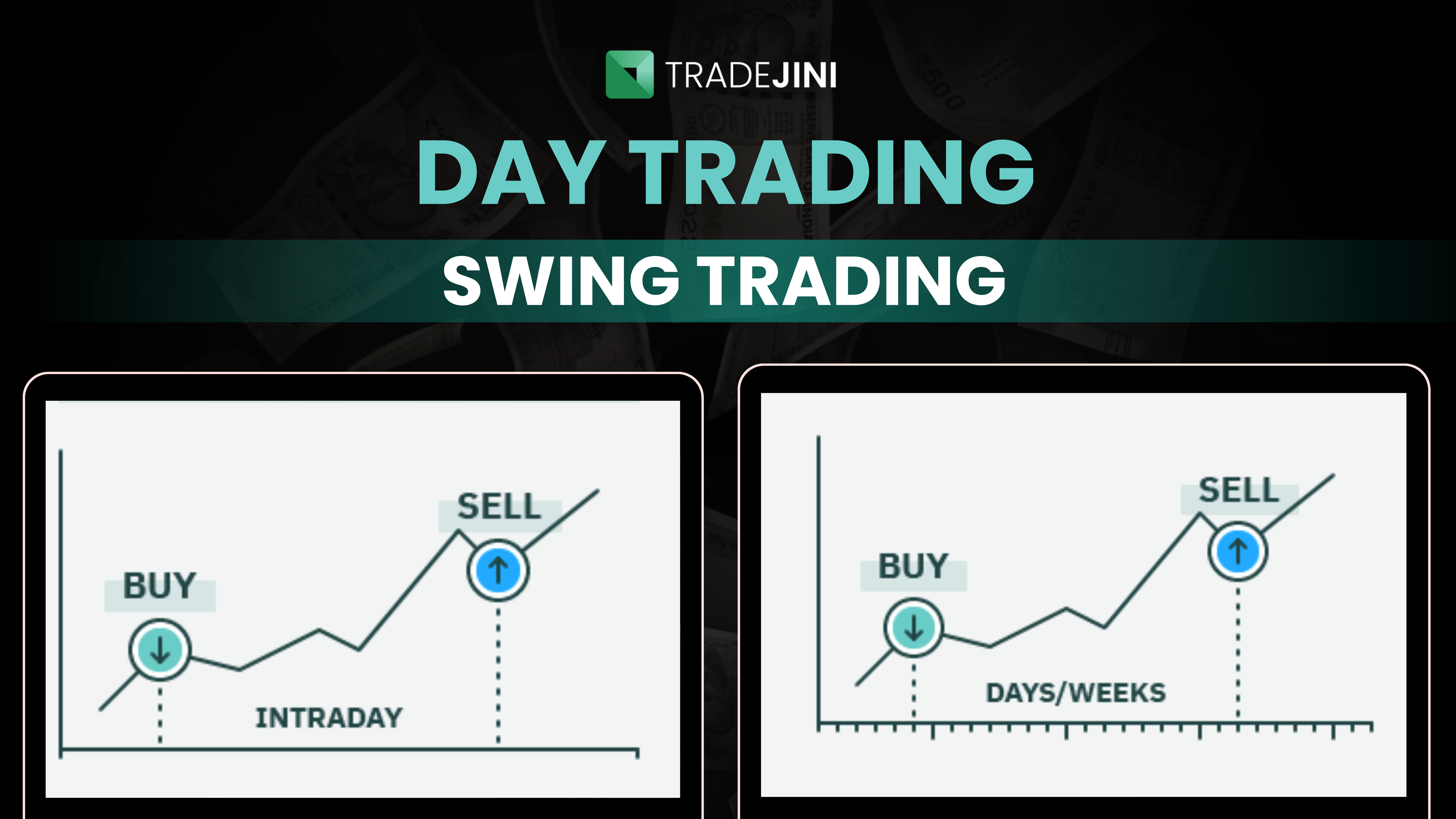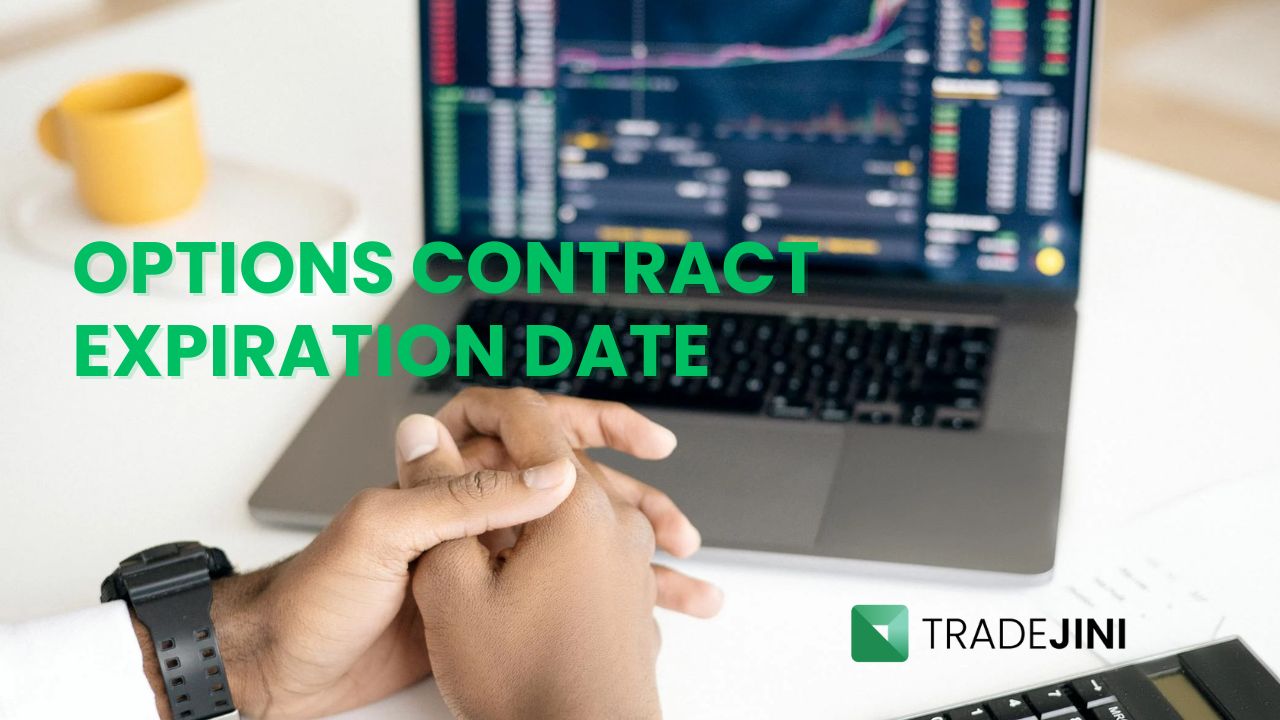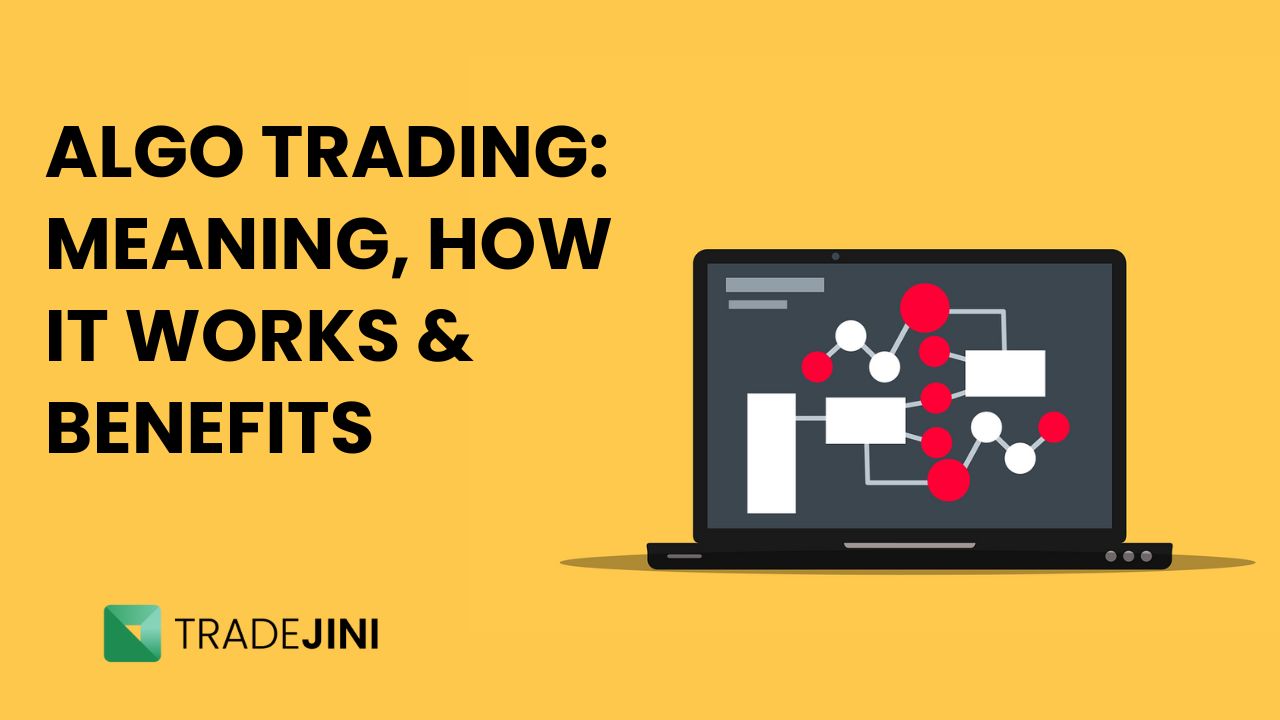If you are exploring the world of stock trading, then you must have come across two popular methods - swing trading and day trading (also called intraday trading). Both are popular ways to make money from price changes in the market, however, they work very differently. So, what is swing trading vs intraday trading, and which one is right for you? With this brief guide, let’s understand it in detail and learn them by breaking down the main differences between intraday trading and swing trading, what they involve, and how you can decide which method suits you.
What is Swing Trading?
Swing trading is when you hold onto a stock for a few days, weeks, or sometimes even a month, looking to earn profit from big changes in the stock's price. The main idea here is to take advantage of the price fluctuations where you buy low and sell high. With this, you do not have to look at the trading screen all day. However, you would still need to keep an eye on the market to catch the right moments to enter and exit a trade.
What is Intra-Day Trading?
On the other hand, Intra day trading, also called intraday trading, is all about speed. Here, you buy and sell stocks within the same day and often make multiple trades in just a few hours. When you are involved in day trading, your main goal is to profit from small price changes. As you do not hold any stock overnight and everything happens quickly, you need to be on high alert. Hence, day trading is fast-paced.
Swing Trade Vs Intraday: Differences
1) Time Frames: How Long Do You Hold Stocks?
The biggest difference between swing trade and intraday trading is how long you hold your stocks. In swing trading, you hold a stock for a longer time, it could be a few days or even weeks.
In day trading, as mentioned earlier, you close all your trades by the end of the day. Here, you are looking to make quick profits from small price changes.
2) How Much Money Do You Need to Start?
When it comes to capital requirements, swing trading and day trading need different amounts of money to get started.
Swing trading usually requires more capital as compared to day trading. Moreover, as you are holding onto stocks for a longer time, you may need a higher amount of margin from your broker. In day trading, the scenario is different: The margin and capital required here are lower.
3) Trading Frequency & Costs: How Often Do You Trade?
Another key difference between intraday trading vs swing trading is how often you trade and the costs involved. In swing trading, you do not trade as often, and hence, you would save on transaction fees. Moreover, as you are holding onto a stock for longer, you would not be paying your broker as often.
Day traders make many trades each day, and that means more transaction costs. These fees can add up quickly, especially if you are trading small amounts and trying to profit from small price movements.
4) Risk vs. Reward: Which is More Risky?
Every type of trading has risks, but the kind of risks you face is different between swing trading and day trading. In a swing trade, you are actually holding onto a stock overnight, which means you are exposed to the risk of something unexpected happening while the market is closed. However, with this, you are also in it for the bigger price changes.
On the other hand, day traders avoid the risk of holding stocks overnight as they close all positions before the market closes. But as they are trading small price movements, day traders need to make quick decisions, which can be risky if you get caught in sudden market changes.
Best Tools for Swing and Day Traders
Whether you are swing trading or day trading, having the right tools can certainly help you make all the difference. Swing traders often like to use tools that help them spot trends. Moving averages and trendlines are popular as they show you where the stock is headed over time.
Day traders need tools that help them make quick decisions. Momentum indicators like the Relative Strength Index (RSI) are key, as they show how strong a stock’s price move is. Day traders also use real-time news and fast charting software to react to market shifts instantly.
Pros and Cons of Swing Trading
Pros of Swing Trading
- Fewer trades, which means lower fees and less time spent monitoring the market.
- Chances for larger profits from longer-term price moves.
Cons of Swing Trading
- More exposure to overnight risks like news events that can affect stock prices.
- Requires more patience as trades take longer to play out.
Pros and Cons of Intra-Day Trading
Pros of Intra-Day Trading
- You do not have to worry about holding stocks overnight.
- Day trading offers plenty of excitement and the chance for quick profits.
Cons of Intra-Day Trading
- High transaction fees due to frequent trades.
- Requires more time and focus as you need to watch the market closely all day.
Which Trading Strategy is Best for You?
When deciding between intraday trading vs swing trading, make sure to first think about your lifestyle and financial goals. Swing trading may be a better option for you if you have a full-time job or do not want to check the market every hour. It is perfect for those who prefer a more relaxed approach. But day trading is ideal if you have the time and wish to actively trade during market hours. You can make quick profits, however, it requires intense focus and fast reflexes.
Read More: Intraday vs Delivery Trading
Trade With Tradejini
No matter whether you decide to try swing trading or intra-day trading, you need a reliable platform to execute your trades. That’s where Tradejini comes in. Tradejini is a powerful trading platform that offers everything you need for both swing trading and intra-day trading. With our easy-to-use mobile app, you can trade on the go, access advanced charting tools, and enjoy low brokerage fees. Tradejini is here to provide top-notch services to help you reach your financial goals.
Start trading today with Tradejini’s CubePlus app!
Also Read: How to Optimize Scalping in Trading for Maximum Effectiveness and Efficiency



